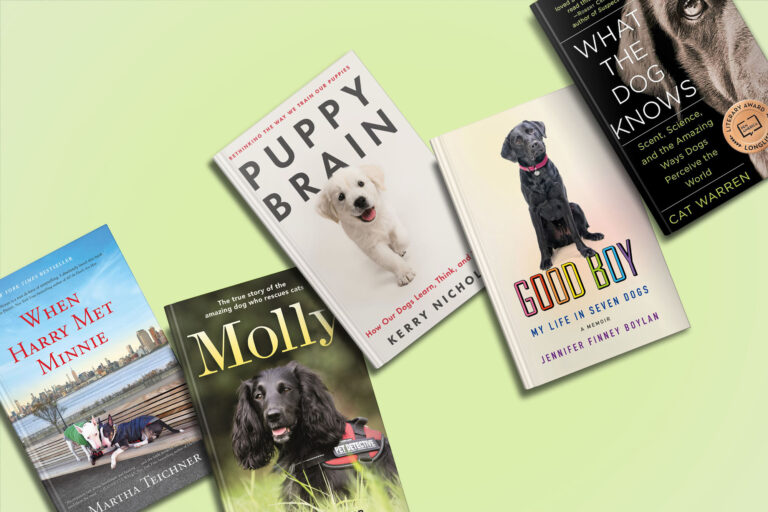These harrowing narratives transport readers to the scene of the crime and seek to give a voice to the lost.
True crime has never been more popular than it is today, as evidenced by the astonishing number of podcasts, TV shows, and documentaries dedicated to the genre. At its core, however, true crime is a type of nonfiction literature. From influential works like Truman Capote’s In Cold Blood (1966) to modern-day investigations such as Michelle McNamara’s I’ll Be Gone in the Dark (2018) or Elon Green’s Last Call (2021), such narratives are unique in the way they connect with their readers, precisely because they explore harrowing real-life events that could happen to anyone.
Want to know more about true crime? Here we define the genre, take a fascinating look at its origins, and cover some of its common themes.
The Definition of “True Crime”
It seems like the definition of true crime would be obvious: A story about a crime that actually occurred. Indeed, most true crime books explore dark and distressing subject matter, and reader discretion is advised. Granted, the first rule of true crime is that the narrative must include as many nitty-gritty facts about the case as possible: Readers expect the actual names of people involved and the correct time and place, information about what they did, and as many details of the crime and its investigation as the author can dig up.
True crime books can be about a single event, like a kidnapping. They can also be about the collective crimes of serial killers, thieves, or cult leaders. However narrow or broad the focus, the best true crime books deliver well-researched, finely written examinations of the case at hand.
But the wealth of details is just half of what makes true crime so popular with readers. The most talented true crime authors excel at presenting the facts of a case while vividly re-creating the atmosphere that surrounded the crime. They put criminals and their victims in context by establishing elements like the political climate of the day, the history of a town, or the struggles faced by a particular community. They dig into everyone’s motives, then weigh these motives against the actions and developments they document. They re-create dialogue as faithfully as possible, although of course sometimes it’s necessary to take artistic liberties.
In other words, the most popular true crime authors transport readers to the scene of the crime, with all senses fully engaged. Without an author’s narrative talents, the details of the crime would simply read like a legal report.
The Origins of True Crime
Before literacy rates hit a growth spurt late in the Renaissance, sensational crimes of the day were reported in the form of ballads. These songs were often written and performed within days of the event. Ballads like “The Gosport Tragedy or the Perjured Ship-Carpenter” (1560s), about a woman murdered by her lover, have been passed down for centuries, with the lyrics modified over time. The ballad “Pretty Polly” is the most recent incarnation of “The Gosport Tragedy” and is considered a staple of American folk music.
Some of the earliest true crime writing comes from England in the early 1600s. Town leaders and clergymen reported horrible local crimes to teach a moral lesson about the limits of God’s mercy to the criminally inclined. John Reynolds’ The Triumphs of Gods Revenge Against the Crying & Execrable Sinne of Willful, & Premeditated Murther is one such collection of crime narratives, written between 1621 and 1635 and originally distributed as pamphlets.
Execution sermons are another form of early true crime writing. Preachers delivered these sermons — popular with Puritans in the New World — prior to the execution of a criminal, focusing on their path to ruin and the ways they could have avoided their fate. These sermons drew large audiences and usually included the person about to be executed. Printed versions of the sermons were sometimes distributed after the execution took place. As these documents evolved, interviews with the condemned were added, often with scandalous confessions. Some of the most common execution sermons in the New World involved women accused of witchcraft, as found in Cotton and Increase Mather’s Wonders of the Invisible World: Being an Account of the Tryals of Several Witches Lately Executed in New-England (1862).
By the 1800s, broadsides, crime pamphlets, and penny dreadfuls offered readers vivid — and often exaggerated — reporting of crimes. They were a sensationalized mix of journalism and storytelling, and they sold well but were certainly not considered literature. Nevertheless, criminal behavior was a popular topic for some of the era’s most respected authors too, with essays by Charles Dickens (“A Visit to Newgate,” 1836) and William Thackeray (“Going to See a Man Hanged,” 1840) examining humanity’s capacity for violence.
Crime fiction flourished in the 18th and 19th centuries, but it was not until 1966 that true crime reached a new level of readership. One book, In Cold Blood by Truman Capote, changed both the way authors wrote true crime and the way critics reviewed it. A hybrid “nonfiction novel,” Capote’s book centers on the 1959 murders of four members of the Clutter family in Holcomb, Kansas. It explores the investigation of the murders, the subsequent capture of killers Perry Smith and Richard Hickock, and their trial and execution. Capote’s nuanced examination on the killers’ motives reads like any bestselling mystery novel. Since In Cold Blood, a bevy of true crime books, podcasts, and documentaries have followed the narrative-driven template that Capote employed.
Common Types of True Crime
There’s always overlap in the types of true crime books, but contemporary titles tend to fall into at least one of the following categories:
Criminal-centric true crime books put criminals and their motives front and center. In 1979, Norman Mailer won the Pulitzer Prize for The Executioner’s Song. The true crime novel centers on Gary Gilmore, who was convicted of murder and insisted on his own execution. Ann Rule’s The Stranger Beside Me (1980) is a shocking account of her friendship with serial killer Ted Bundy.
Victim-centric true crime books focus on the lives of the victims and seek to give a voice to the lost. Elon Green’s Last Call: A True Story of Love, Lust, and Murder in Queer New York (2021) shines a light on a serial killer who targeted gay men in 1980s and ’90s at the height of the AIDS epidemic. Robert Kolker’s Lost Girls (2013) gives a voice to the victims of the still-unidentified Long Island Serial Killer.
Some true crime books focus intensely on the investigation of the crime. Michelle McNamara’s I’ll Be Gone in the Dark (2018) famously tracks the author’s search for the Golden State Killer. The Lazarus Files (2019) by Matthew McGough tells the story of a cold case investigation that unearths a killer in an unexpected place.
Historical true crime books shed light on notorious crimes of yesteryear, some of which have gone unsolved for generations. Erik Larsen’s The Devil in the White City (2003) tells the story of the Chicago World’s Fair in 1893 and the crimes that notorious serial killer H.H. Holmes committed in the shadow of the exposition. Tom Clavin details one of the most notorious Wild West shoot-outs in Tombstone (2020), offering his take on what happened to the survivors. The Kidnap Years (2020) by David Stout reminds us of a heartbreaking kidnapping epidemic during the Great Depression, which included the Lindbergh baby.
Sociopolitical true crime books cover crimes of power and influence like political assassinations, high-profile robberies, or organized crime. Ghost in the Wires (2011) by Kevin Mitnick is a true crime memoir about his life as a hacker on the run from the FBI. Charles Brandt’s I Heard You Paint Houses (2004) centers on the confessions of hitman Frank “the Irishman” Sheeran, including that Sheeran killed Jimmy Hoffa. As for the assassination of JFK, there are too many books to count.
Last but not least, no true crime bookshelf is complete without a bleak look into the lives of the world’s most notorious cults. The Road to Jonestown (2017) by Jeff Guinn includes recent interviews with survivors of Jim Jones’s cult, plus others who knew Jones personally. Multiple books have been written about Charles Manson and his clan of followers, but none are more popular than Vincent Bugliosi’s Helter Skelter (1974), which stands as the bestselling true crime book of all time (Capote’s In Cold Blood comes in second).



